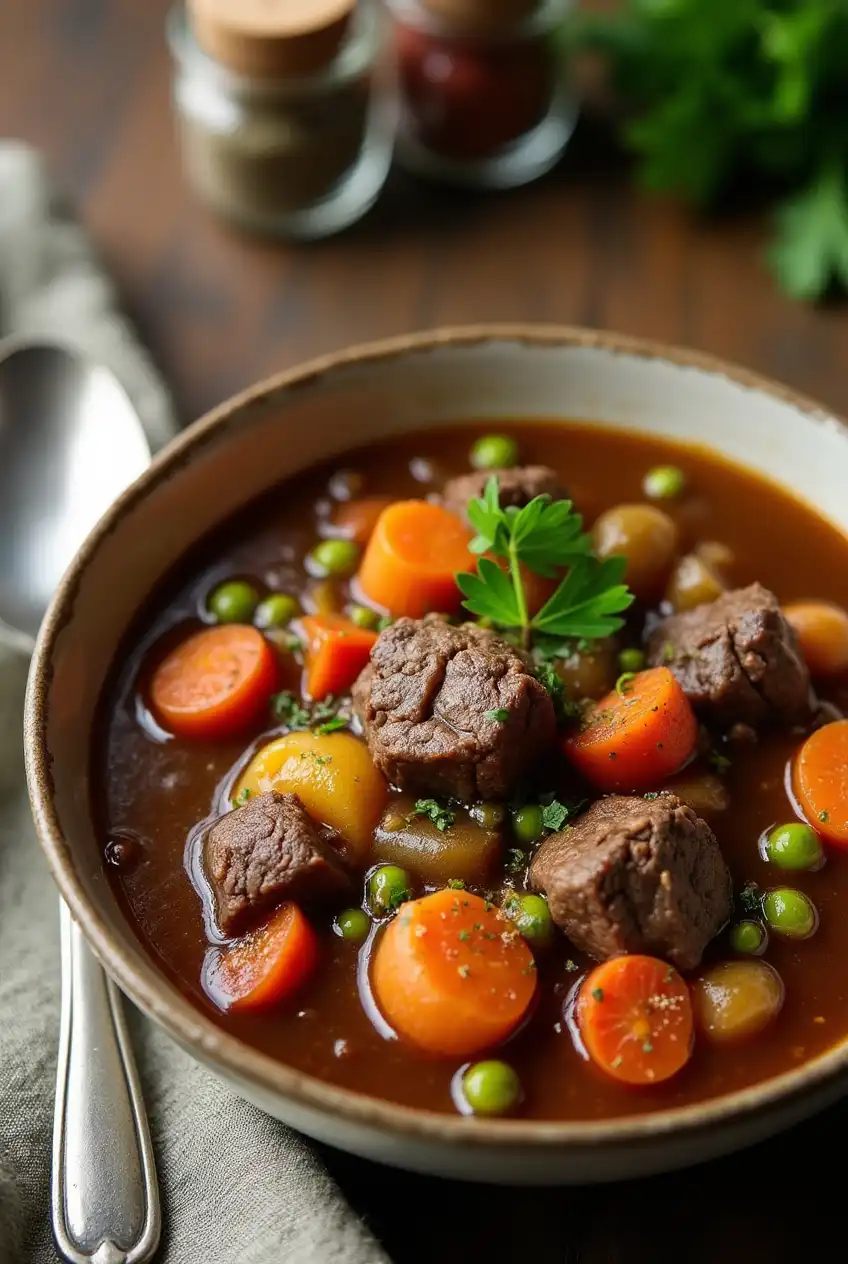Seasoning is everything when it comes to cooking, and a hearty beef stew is no exception. Done right, the perfect combination of spices and herbs can elevate a simple dish into a rich, flavorful masterpiece. If you’ve been looking for a foolproof way to season your beef stew, you’re in the right place. This guide breaks down the essential ingredients, the best way to use them, and smart tips for creating a seasoning blend that brings out the best in your stew.
Whether you’re a seasoned home cook or just setting foot in the kitchen, we’ll show you how to craft a DIY beef stew seasoning mix tailored to your taste. Let’s dive in.
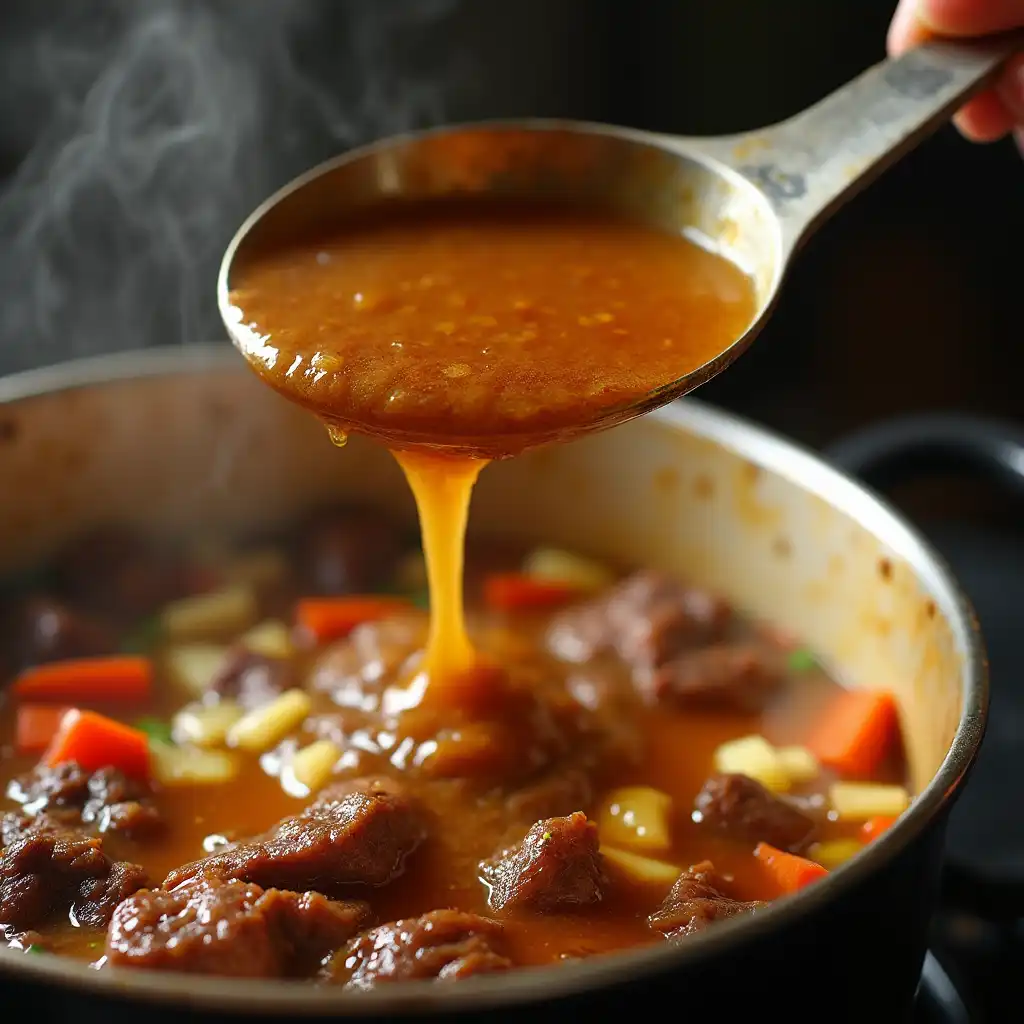
Table of Contents
Best Beef Stew Seasoning Ingredients to Use
The secret to an unforgettable beef stew lies in carefully balancing essential spices and fresh or dried herbs. Here’s what you should know before mixing your ingredients.
Essential Spices for Beef Stew
Start with foundational spices—they’re the backbone of any great stew:
- Salt and Pepper: These are non-negotiable. They enhance natural flavors and create a strong base.
- Garlic Powder and Onion Powder: Both deliver robust, aromatic depth to your beef stew without overpowering it.
Herbs That Complement Beef Stew
Adding the right combination of herbs can take the flavor of your stew to another level:
- Thyme: Offers a subtle earthy tone that pairs beautifully with savory dishes.
- Rosemary: Brings a woodsy flavor that elevates the richness of the beef.
- Bay Leaves: A classic ingredient for stews, bay leaves add mild, delicate flavor—just remember to remove them before serving.
Optional Ingredients for a Unique Flavor
For an extra dimension, consider these options:
- Paprika (or Smoked Paprika): Adds warmth and a touch of smokiness.
- Cayenne Pepper: Gives your stew a spicy kick.
- Dried Mustard: Introduces a tangy complexity.
- Fresh Parsley: Brightens the dish when sprinkled on just before serving.
Choosing Fresh vs. Dried Spices and Herbs
- Fresh Herbs are ideal for vibrant, bold flavors and are best added toward the end of the cooking process.
- Dried Herbs have concentrated flavors and work well for longer cooking times. They’re also more convenient and have a longer shelf life.
How to Make Beef Stew Seasoning at Home
Creating your own seasoning blend at home is simple, cost-effective, and allows you to customize flavors.
Simple DIY Beef Stew Seasoning Blend
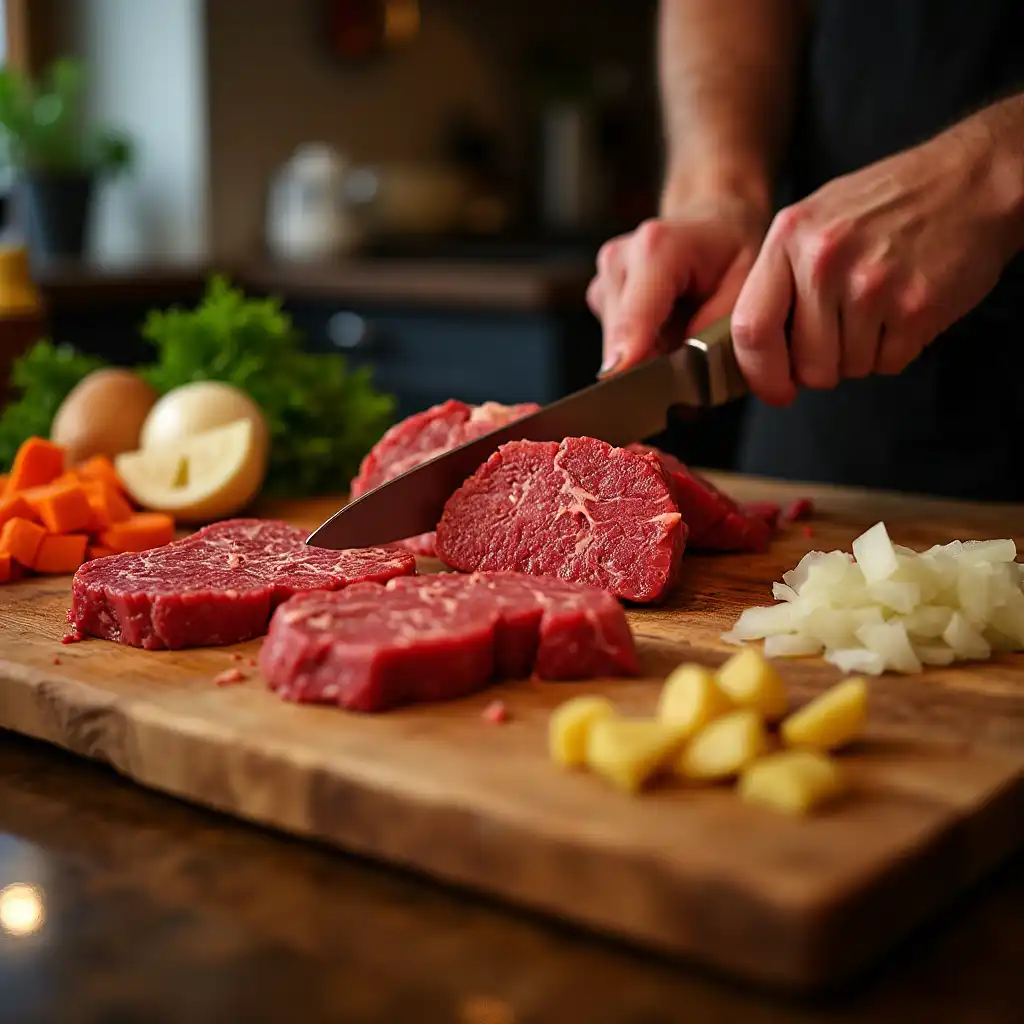
Mix these ingredients for an all-purpose beef stew seasoning:
- 2 tsp salt
- 1 tsp black pepper
- 1 tsp garlic powder
- 1 tsp onion powder
- 1 tsp paprika
- 1 tsp dried thyme
- ½ tsp dried rosemary
- 1 bay leaf (add whole, not ground)
Customizing Your Seasoning for Different Flavors
- Prefer bold flavors? Increase paprika or add cayenne pepper.
- Want a sweeter twist? Add a pinch of brown sugar or include diced carrots.
- Need a lighter profile? Dial back on rosemary and stick to parsley and thyme.
How to Store Beef Stew Seasoning for Future Use
- Storage Tips: Use airtight containers or glass jars to preserve freshness. Label them to include the date you made them.
- Shelf Life: Most spice blends stay fresh for 6-12 months if stored in a cool, dry place.
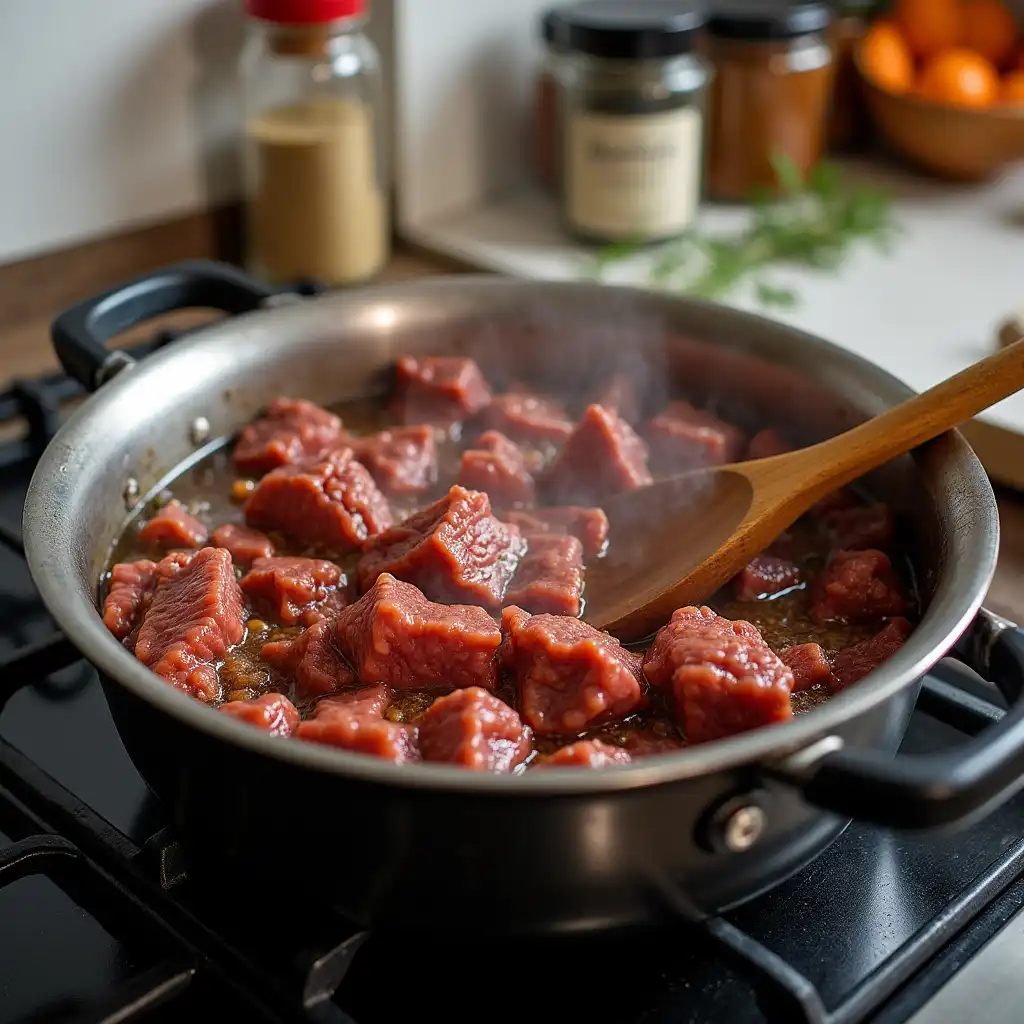
Tips for Perfectly Seasoned Beef Stew
Having the right ingredients is crucial, but timing and balance are just as important.
When to Add Seasoning for Optimal Flavor
- Prepping the Meat: Season beef chunks with salt and pepper before browning. This ensures flavorful meat and creates a great base for the stew.
- During Cooking: Add dried spices as the stew simmers to allow flavors to meld over time.
- Finishing Touches: Fresh herbs and any necessary seasoning adjustments should be added right before serving.
How to Adjust Seasoning as It Cooks
Taste your stew at regular intervals during cooking. Flavors deepen as the stew simmers, so hold off on adding too much seasoning until you’re close to the end.
Balancing Salt and Spices for Perfect Seasoning
Too much salt can overpower the stew while too little can make it taste bland. Start small, taste as you go, and aim for harmony between salt, savory herbs, and sweetness.
Flavor Profiles to Consider for Beef Stew
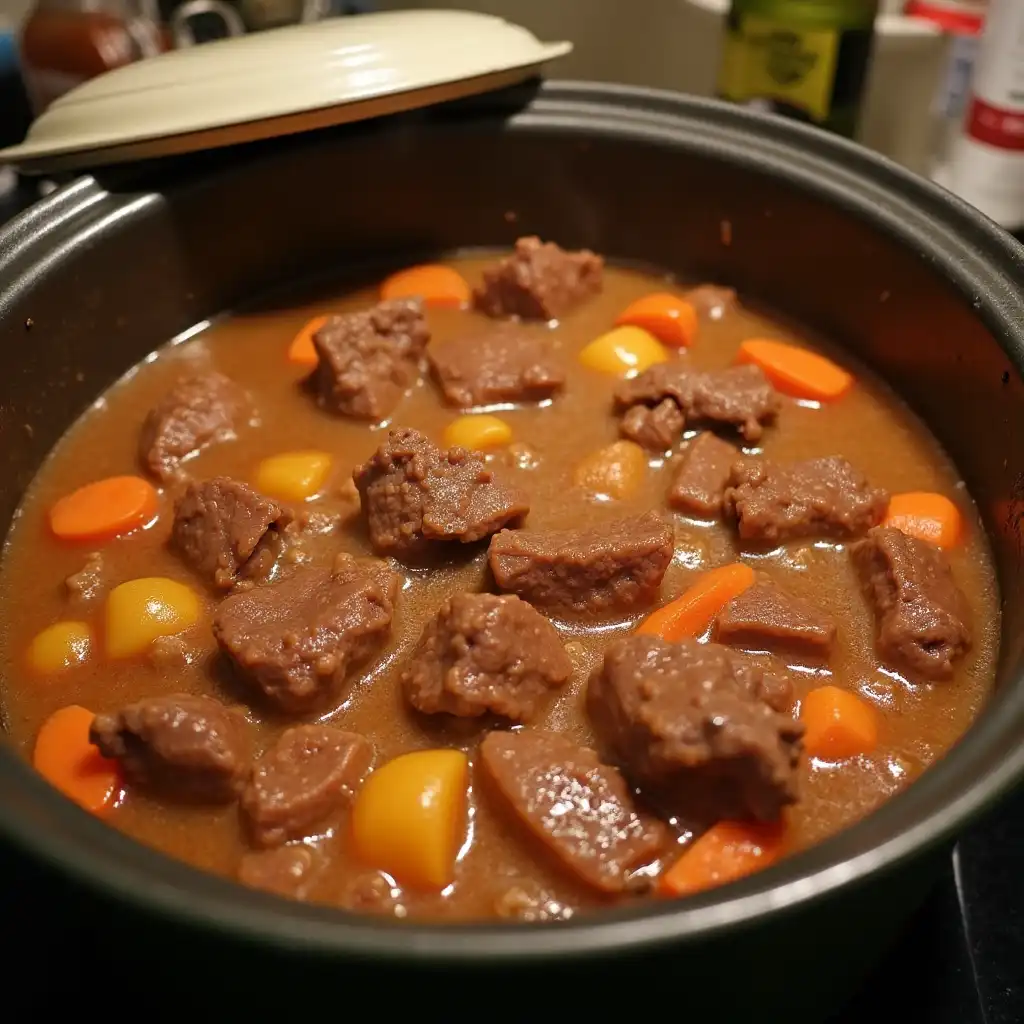
Tailor your seasoning to create a flavor profile that suits your preferences.
Savory and Earthy Flavors
- Key Ingredients: Thyme, bay leaves, black pepper.
- Perfect for traditionalists who enjoy deep and comforting flavors.
Spicy and Bold Flavors
- Key Ingredients: Paprika, cayenne, chili flakes.
- Ideal for those who like a bit of heat with their stew.
Sweet and Subtle Flavors
- Key Ingredients: Carrots, parsnips, brown sugar.
- Great for families or anyone who enjoys a hint of sweetness.
Creating a Custom Flavor Profile for Your Stew
To make your seasoning truly unique, experiment with a mix of dried and fresh spices until you find the perfect balance.
Common Mistakes to Avoid When Seasoning Beef Stew
Even with the best intentions, it’s easy to make seasoning mistakes. Here’s how to avoid the most common ones.
Overseasoning or Underseasoning
Solution:
- Start with smaller amounts of seasoning, and build up gradually. Remember, you can always add more but can’t easily remove it.
Using Too Many Strong-Spiced Ingredients
Solution:
- Stick to one or two bold spices (like cayenne or mustard). Too many can clash and overwhelm the dish.
Failing to Consider Cooking Time
Solution:
- Remember that flavors intensify the longer they cook, so start conservatively with potent spices.
Elevate Your Beef Stew with the Right Seasoning
The perfect beef stew is all about balance—rich, hearty ingredients brought to life with thoughtfully chosen seasonings. Start with the basics, adjust according to your taste, and don’t be afraid to experiment with unique flavor combinations. With this guide, you’re well on your way to making restaurant-quality beef stew at home.
Give this recipe a try and transform your next stew into a culinary masterpiece. Be sure to share your creations with us in the comments—your perfect seasoning blend might inspire someone else’s next meal!
